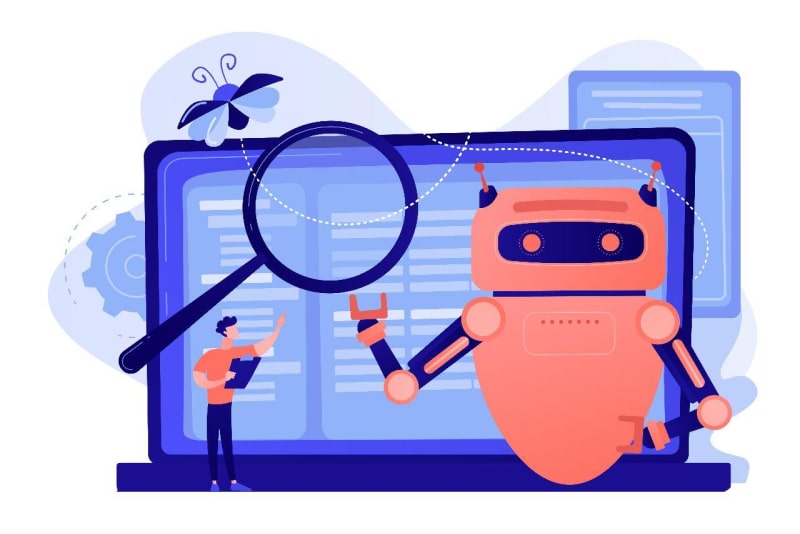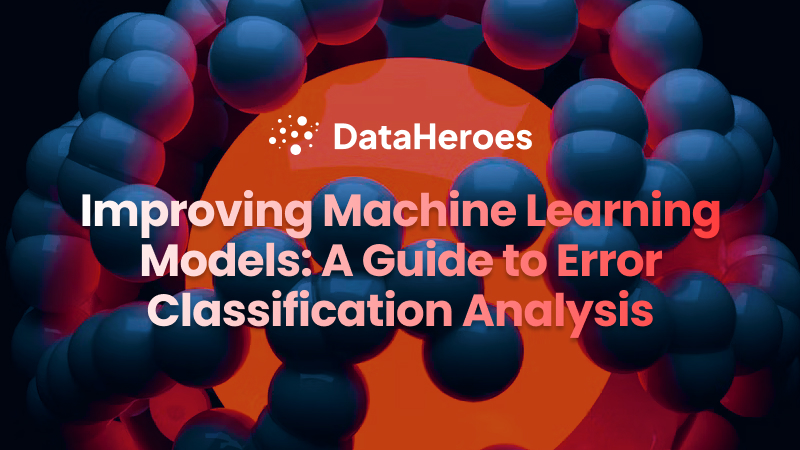
Error classification plays a crucial role in improving the performance of machine learning models. Accurate identification and analysis of classification errors enable data scientists to extract valuable insights into the model’s behavior and make informed decisions for improvement.
Types of Error Classification:
Classification Errors
- False Positives:
False positives occur when a sample is incorrectly classified as positive when it should have been negative.
- Characteristics: False positives can lead to false alarms or incorrect predictions of positive outcomes.
- Impact: False positives can result in unnecessary actions or costs in various applications, such as medical diagnosis or spam detection.
- Mitigation Strategies:
- Adjusting the classification threshold to minimize false positives.
- Improving feature selection and engineering to reduce the occurrence of misleading patterns.
- Addressing class imbalance issues through techniques like oversampling or under-sampling or class weighting.
- False Negatives:
False negatives happen when a sample is incorrectly classified as negative when it should have been positive.
- Characteristics: False negatives can result in missed opportunities or risks.
- Impact: False negatives can have severe consequences in applications like fraud detection or medical diagnosis.
- Mitigation Strategies:
- Adjusting the classification threshold to reduce false negatives.
- Collecting more representative training data to capture diverse patterns.
- Applying advanced techniques like ensemble methods or boosting algorithms to improve model performance.
- Confusion Matrix:
A confusion matrix is a table that visualizes the performance of a classification model by showing the counts of true positives, true negatives, false positives, and false negatives.
- Analysis: Analysing the confusion matrix provides insights into the distribution of classification errors across different classes.
- Metrics: Performance metrics derived from the confusion matrix include accuracy, precision, recall, and F1-score.
- Interpretation: The confusion matrix helps identify areas where the model is struggling and informs decision-making for improvement.
Types of Errors in Machine Learning:
- Underfitting: Underfitting arises when a model is excessively simplistic and fails to grasp the underlying patterns within the data, resulting in elevated errors across both the training and test sets.
- Overfitting: Overfitting occurs when a model excessively memorizes the training data, impeding its ability to generalize to new, unseen data. This leads to low training error but high error rates on the test set.
- Bias: Bias refers to the systematic error introduced by the model’s assumptions or limitations, causing consistent deviations from the true values.
- Variance: Variance represents the model’s sensitivity to fluctuations in the training data, leading to high variability in the predictions.
Misclassification Analysis:
Misclassification analysis involves examining misclassified instances to understand the patterns and factors contributing to classification errors.
Techniques such as feature visualization, decision boundary analysis, or feature importance analysis can help gain insights into the misclassification process.
- Data Quality Assessment: Misclassification analysis often reveals issues related to data quality, including outliers, missing values, or mislabeled samples.
- Feedback Loop: Insights gained from misclassification analysis can be used to refine the model, update features, or collect additional relevant data.
Importance of Error Classification:
- Model Performance Evaluation: Error classification provides valuable insights into the performance of machine learning models by identifying and quantifying the types and sources of errors.
It helps evaluate the effectiveness and accuracy of the model in predicting different classes.
By understanding the distribution of errors, data scientists can assess the model’s strengths and weaknesses, enabling targeted improvements.
- Refinement of Models:
Error classification analysis guides the refinement process, allowing data scientists to make informed decisions on how to enhance model performance.
It helps identify areas where the model is struggling, enabling targeted modifications and adjustments.
By focusing on the most frequent and impactful errors, data scientists can allocate their resources efficiently for improvement.
- Insights into Data and Features:
Error classification offers insights into the characteristics of misclassified instances, shedding light on potential issues in the data or feature engineering process.
It helps identify patterns and trends in misclassifications, enabling data scientists to make data-driven decisions for data cleaning, augmentation, or feature selection.
- Guiding Feature Engineering:
Analyzing the types of errors can provide guidance for feature engineering techniques, such as adding new features or transforming existing ones.
It helps identify features that contribute significantly to errors and guides the selection or creation of features that improve the model’s predictive power.
- Decision-Making and Business Impact:
Error classification is essential for decision-making in various applications where the consequences of misclassifications can be significant.
Accurate classification is crucial for making critical decisions and minimizing risks in domains like healthcare, finance, or fraud detection.
By understanding and addressing classification errors, organizations can improve efficiency, save costs, and enhance user experience.
- Continuous Improvement:
Error classification analysis is an iterative process that promotes continuous improvement of machine learning models.
By regularly assessing and analyzing errors, data scientists can track the progress of model enhancements over time.
It enables them to measure the impact of modifications and evaluate whether the implemented changes have effectively reduced errors.
- Generalization and Model Deployment:
- Error classification helps ensure that machine learning models generalize well to unseen data and perform reliably in real-world scenarios.
- It allows data scientists to assess the model’s robustness and validate its performance on different datasets.
- By addressing classification errors, models can be more dependable and trustworthy when deployed in production environments.
Feature Importance in Error Classification:
Feature importance refers to the assessment of the contribution of individual features in the classification process and their impact on error classification.
It helps determine which features significantly influence the model’s performance and the occurrence of classification errors.
- Identification of Influential Features:
Feature importance analysis helps identify the features that contribute the most to errors and misclassifications.
It allows data scientists to pinpoint the factors that lead to incorrect predictions and focus on improving or addressing those specific features.
- Techniques for Feature Importance:
- Permutation Importance: This method involves randomly permuting the values of a single feature and measuring the resulting decrease in model performance. The larger the decrease, the more important the feature is considered.
- SHAP (SHapley Additive exPlanations) Values: SHAP values quantify the contribution of each feature by considering all possible feature combinations. They provide a comprehensive understanding of the impact of individual features in the classification process.
- Feature Importance from Tree-Based Models: Tree-based models, such as random forests or gradient boosting, offer built-in feature importance measures based on how frequently and deeply features are used in decision-making.
- Interpretation and Insights:
Assessing feature importance helps interpret the model’s behavior and understand the underlying factors contributing to classification errors.
It provides insights into which features play a critical role in misclassifications and guides data scientists in making informed decisions for model improvement.
- Feature Engineering and Selection:
Understanding feature importance assists in feature engineering and selection processes to mitigate classification errors.
Features with high importance can be further refined, transformed, or engineered to enhance their discriminatory power and reduce misclassifications.
Conversely, features with low importance or those that introduce noise or confusion can be considered for removal or transformation.
- Dimensionality Reduction:
Feature importance analysis can aid in dimensionality reduction by identifying less important features that do not significantly contribute to the classification process.
Removing irrelevant or redundant features can simplify the model, reduce computation requirements, and improve generalization and interpretability.
- Model Regularization and Optimization:
Feature importance analysis can guide model regularization techniques, such as L1 or L2 regularization, by assigning higher penalties to less important features.
By reducing the impact of less relevant features, regularisation techniques help prevent overfitting and improve the model’s ability to generalize.
- Model Selection and Comparison:
Feature importance analysis facilitates the comparison of different models based on their ability to capture the most important features and minimize classification errors.
It enables data scientists to assess which models are most effective in utilizing feature information for accurate predictions.
Techniques for Error Classification:
- Confusion Matrix Analysis:
A confusion matrix is a fundamental tool for error classification. It presents a tabular representation of predicted versus actual class labels, allowing for the calculation of various performance metrics.
Metrics such as accuracy, precision, recall, and F1 score can be derived from the confusion matrix to assess different types of classification errors.
- Error Visualisation:
Visualizing errors can provide valuable insights into the patterns and characteristics of misclassifications.
Techniques such as heatmaps, scatter plots, or decision boundaries can be used to visually analyze the distribution and clustering of errors.
- Error Decomposition:
Decomposing errors helps identify the specific types and sources of misclassifications.
Techniques such as partial dependence plots, individual conditional expectation (ICE) plots, or feature contribution analysis can assist in understanding how different features contribute to errors.
- Error Sampling:
Sampling misclassified instances allow data scientists to examine specific examples in detail.
Randomly selecting and analyzing misclassified samples can provide a deeper understanding of the reasons behind the errors and help identify common patterns.
- Feature Importance Analysis:
Assessing the importance of features in the classification process can aid in error classification.
Techniques such as permutation importance, SHAP values, or feature importance from tree-based models can help identify features that significantly contribute to errors.
- Ensemble Methods:
Ensemble methods offer a valuable approach to enhance error classification by utilizing techniques such as bagging, boosting, or stacking.
The idea behind ensemble methods involves the combination of multiple models or predictions, which contributes to the reduction of individual model errors and the improvement of the overall accuracy in classification.
- Error-Correcting Output Codes (ECOC):
ECOC is a technique that enhances error classification by encoding multiple class labels into binary codes.
By decomposing the classification problem into multiple binary sub-problems, ECOC can improve error detection and correction capabilities.
- Cross-Validation and Hyperparameter Tuning:
Cross-validation techniques, such as k-fold cross-validation, can be used to assess the generalization performance of the model and identify potential sources of errors.
Hyperparameter tuning helps optimize the model’s performance by fine-tuning parameters that affect its ability to classify accurately.
- Error-Based Learning:
Error-based learning methods leverage the information from classification errors to improve the model’s performance iteratively.
Techniques such as active learning, self-training, or co-training utilize classification errors to select or generate new training samples for model refinement.
- Transfer Learning and Pretrained Models:
Transfer learning utilizes pre-existing models trained on large datasets to improve error classification.
Transfer learning can enhance the model’s ability to generalize and reduce errors by leveraging knowledge from related tasks or domains.
Conclusion
Error classification analysis is an essential process in improving machine learning models. By accurately identifying and understanding the types of errors, data scientists can refine models, make informed decisions, and optimize performance. Applying the techniques mentioned in this blog post, along with continuous learning and iteration, will help enhance the accuracy and reliability of machine learning models in real-world applications.
By analyzing misclassifications, leveraging confusion matrices, evaluating performance metrics, and assessing feature importance, data scientists can gain a comprehensive understanding of the errors encountered in classification models. This understanding serves as a roadmap for model refinement and guides the decision-making process.




